This summer, I grew several aji pepper plants called Mojo. Aji peppers are what they call chili peppers in South America and the Caribbean. They are supposed to be about as hot as cayenne peppers, but Mojo peppers are on the milder side. This pepper makes outstanding hot pepper sauce that is full of sweet, fruity, tropical, citrusy, and spicy notes. I added some sunflower oil to this sauce as well as a little bit of corn flour as a thickener. Both make the sauce exceptionally creamy and enjoyable with just about anything, from grilled meats to BBQ to fried eggs.
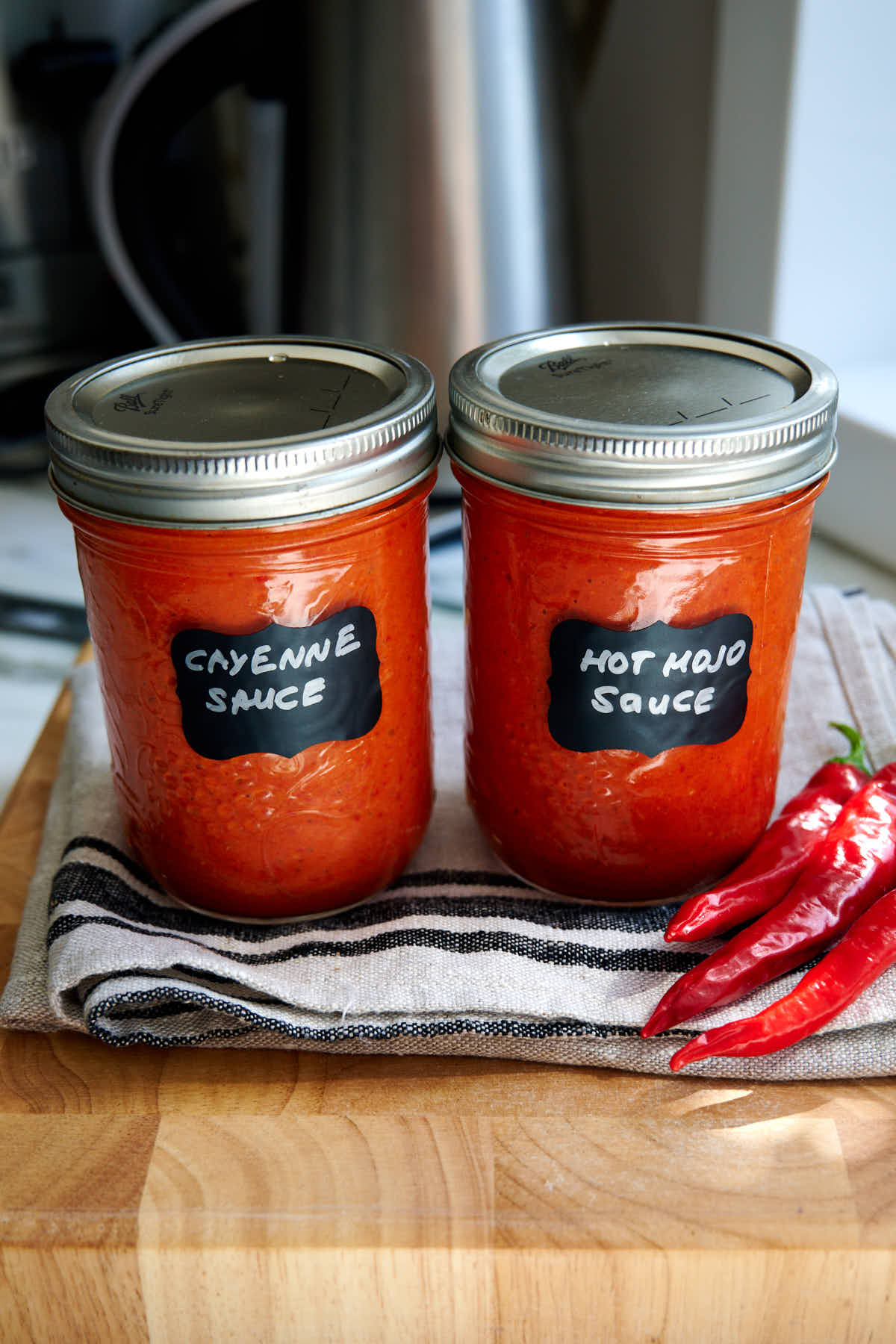
I must say, not everyone in my family likes hot sauce. This sauce is definitely an exception, as everyone likes it despite some heat. The biggest selling point of this pepper sauce is its sweet, fruity flavor and creamy texture. I made two versions of the sauce, a hotter one and a milder one, without pepper seeds and membranes, for those who like it with less heat.
What peppers will work with this pepper sauce recipe?
Any aji or chili peppers, e.g., cayenne peppers, will work in this recipe and give you outstanding results. Just make sure to use fresh, undamaged peppers. As usual, remove seeds and membranes for a milder version of your pepper sauce, as that's where most of the heat in peppers is.
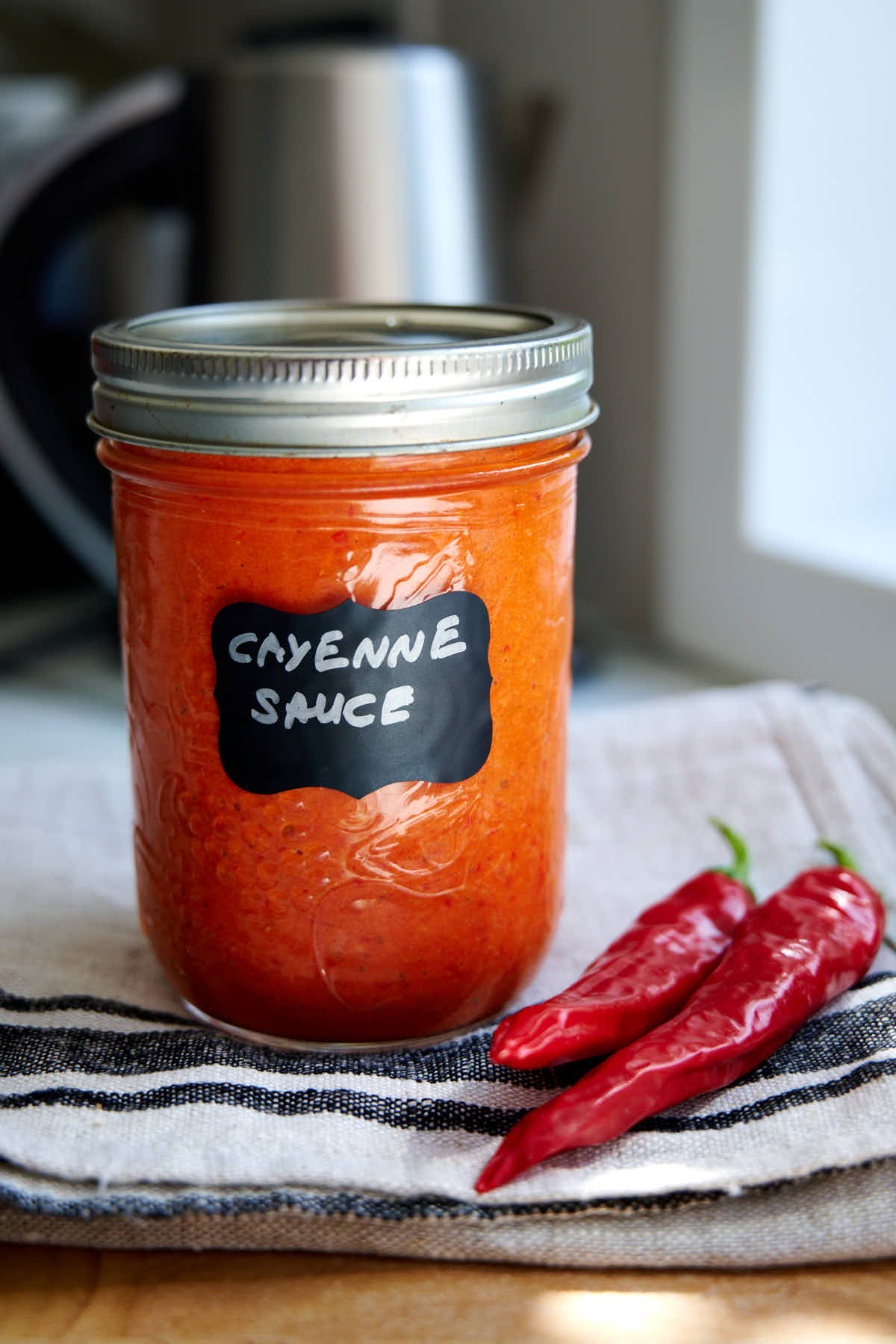
As I mentioned above, my family really liked the sauce made with Mojo peppers. If you grow peppers in your garden like I do, you can buy seeds from Johnny's Seeds and grow them yourself. I find them very easy to grow as they are quite resistant to pests like other hot peppers.
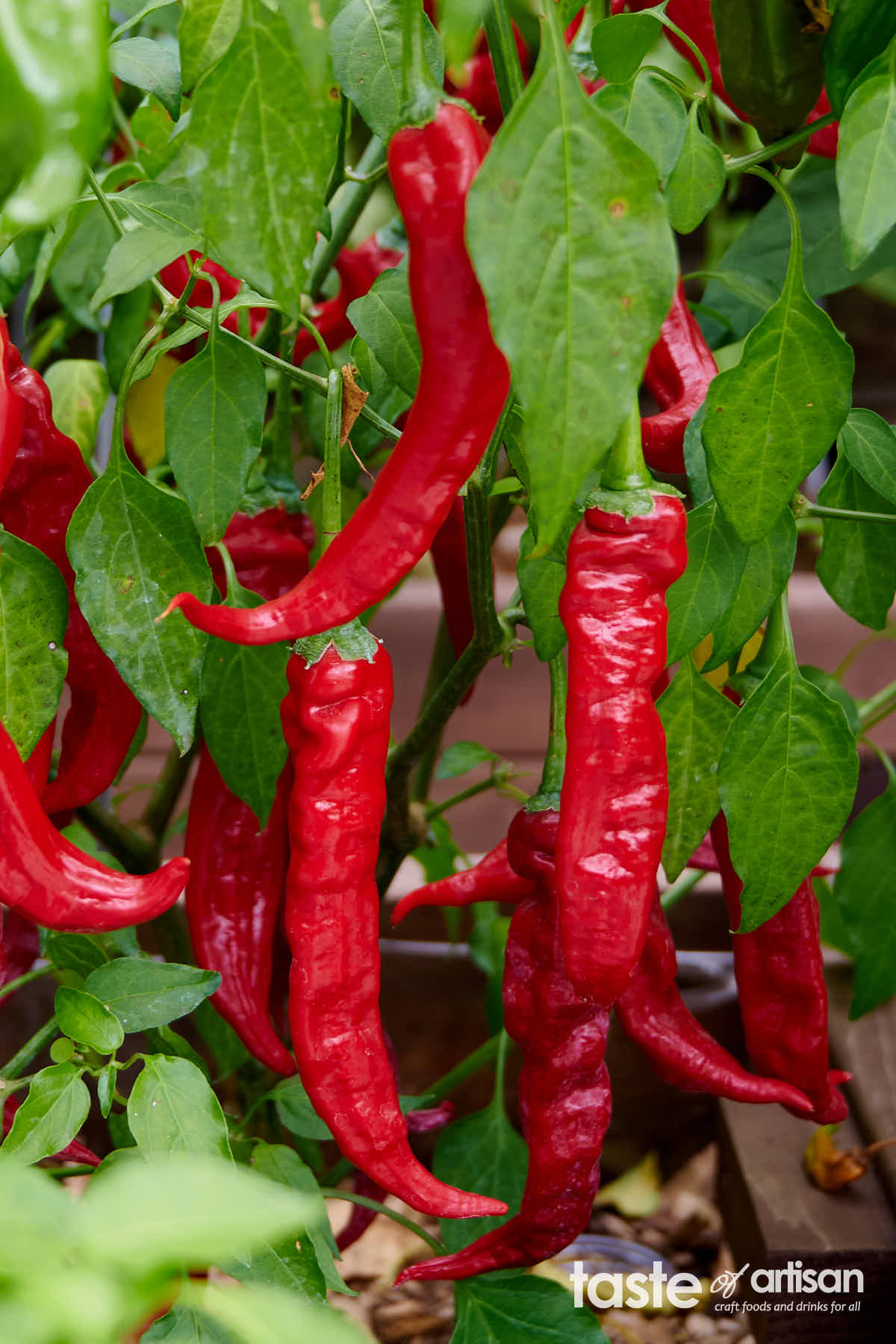
The ingredients
In addition to chili peppers, I add fresh garlic, salt, toasted coriander and dill seeds, white wine vinegar, sunflower oil, and a little bit of corn flour.
White wine vinegar adds acidity, which improves the taste and extends the shelf life of the sauce. I add two tablespoons of vinegar per pound of peppers, which gives me the optimal taste and brings the pH to well below 4.6. This makes it an acid food with excellent storage qualities.
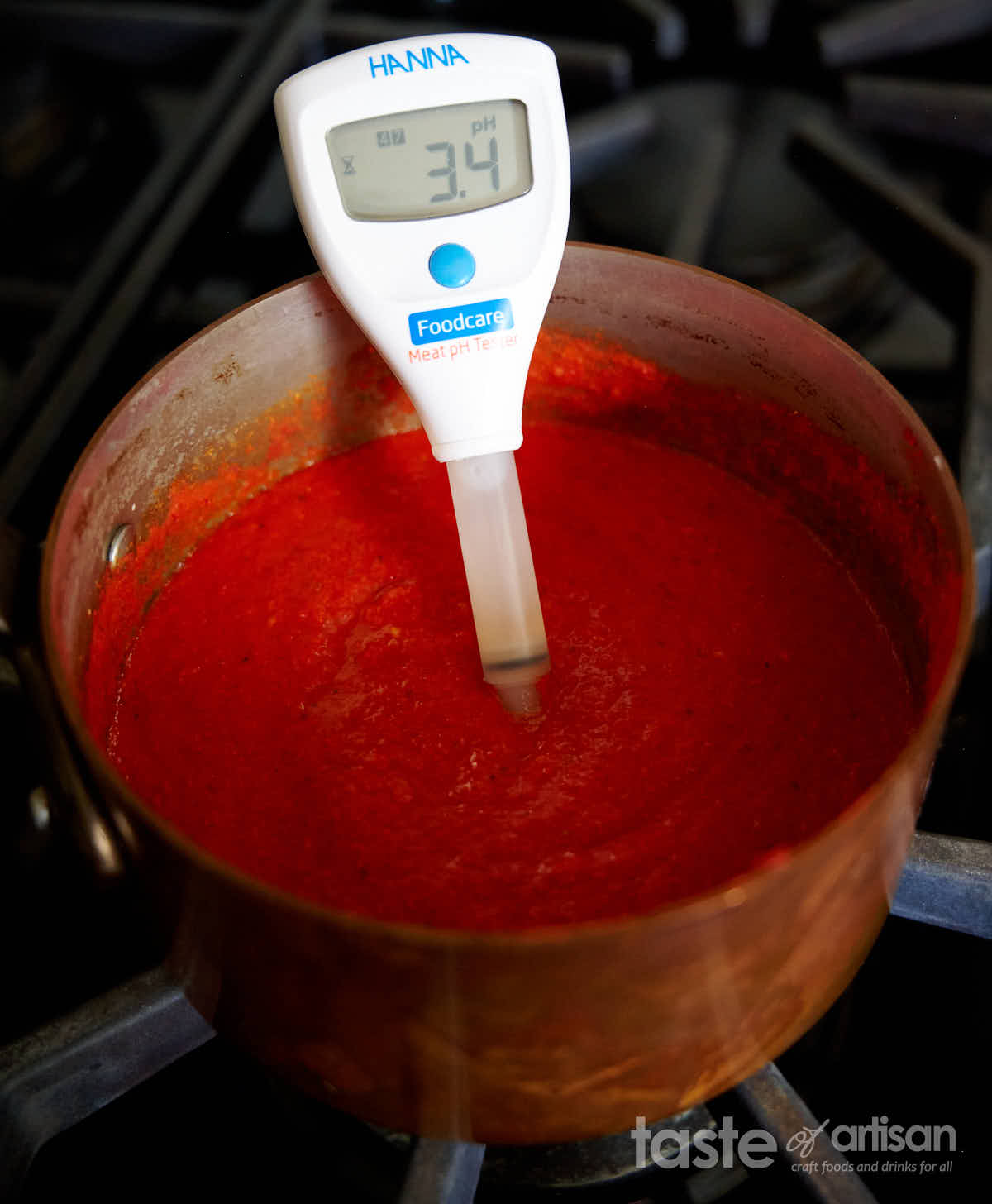
Garlic, toasted coriander, and dill seeds add complexity to the sauce's flavor. You can also use other spices, like fennel or fenugreek if you like their flavor. Toasting them before grinding will greatly amplify their aroma, so don't skip that step.
Sunflower oil and cornflower are not typical pepper sauce ingredients here, but they do improve the texture and mouthfeel of the sauce. Oil is often added to preserves in Italy, including sauces. Cornflower thickens the sauce and makes it feel creamy. But don't add too much. A tablespoon per pound of peppers will do.
Making the sauce
You will need a blender to make this sauce. The process is very simple: throw all of the ingredients together in the blender bowl and pulse for 20-30 seconds until the mass is creamy.
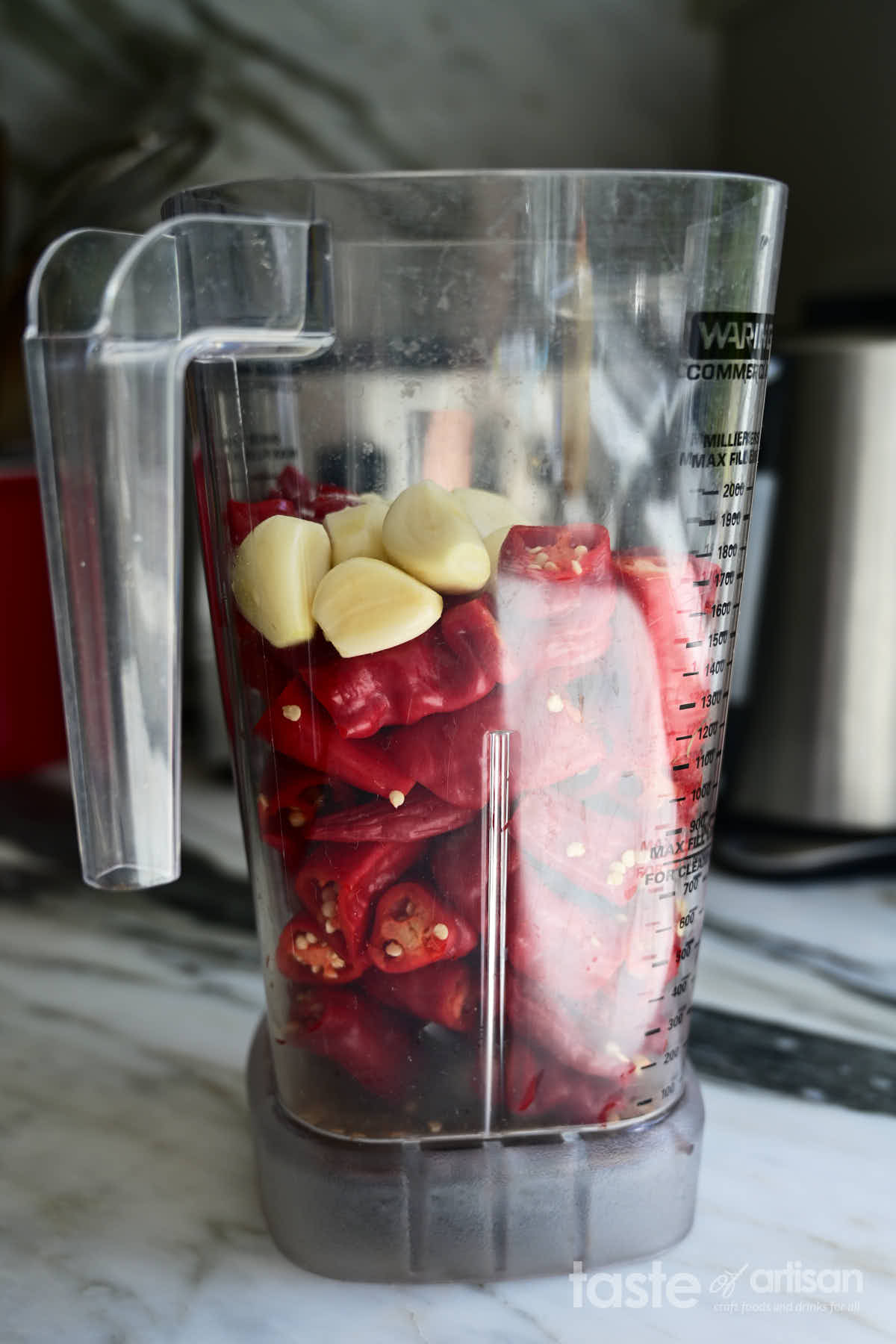
Next, transfer the sauce to a saucepan and simmer for 10 minutes. Cooking the sauce for a short period of time will take the edge off the fresh garlic and let the flavors meld together. It will also help extend the sauce's shelf life.
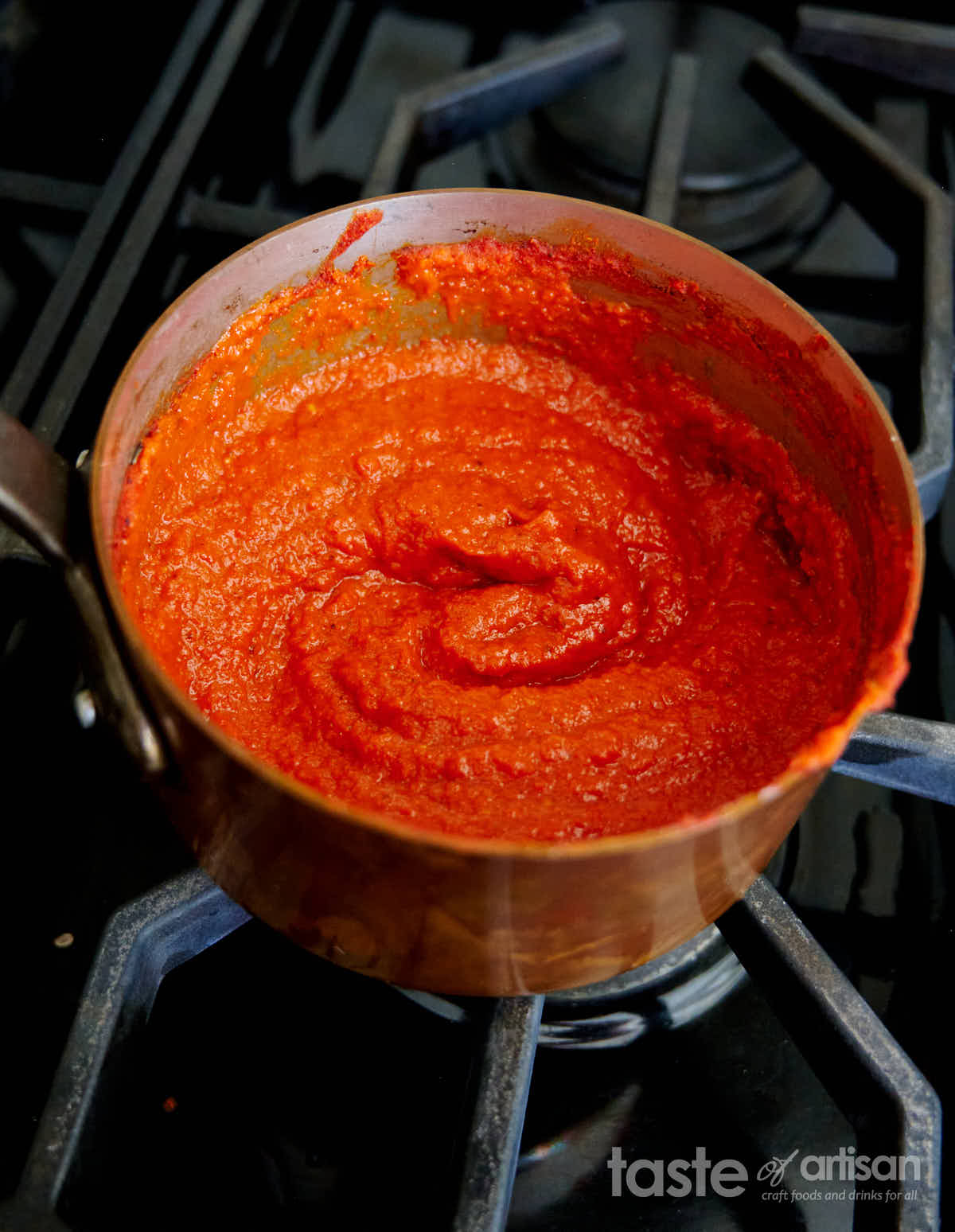
Storage
This pepper sauce will keep in the fridge for several months or longer. Just make sure to keep it in a clean, tightly closed container. Glass bottles with screw-on caps work very well for this.
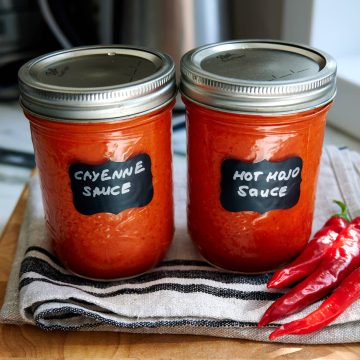
Hot Pepper Sauce
Ingredients
- 1 lb chili peppers e.g. cayenne peppers
- 6 garlic cloves
- 4 Tbsp sunflower oil
- 2 Tbsp white wine vinegar
- 1 tsp sea salt
- 1 Tbsp coriander seeds
- 1 Tbsp dill seeds
- 1 Tbsp corn flour optional, makes a thicker pepper sauce
Instructions
- For a milder version of the sauce, cut off the stems, slice the peppers in half, remove seeds and membranes, and cut the peppers into 2-inch pieces. For a hotter version, remove the stems and cut the peppers into 2-inch pieces.
- Toast the coriander and dill seeds in a cast iron pan over medium heat. Remove once the seeds become aromatic. Grind in a pepper mill or a mortar.
- Combine all of the ingredients in a blender and pulse until a smooth consistency is achieved.
- Transfer the sauce to a saucepan and bring to a simmer over medium heat. Let simmer for 10 minutes.
- Remove the sauce from the heat and let cool for 10 minutes.
- Transfer the sauce into a storage container or a bottle. Seal tightly. Let the sauce cool down to room temperature, then refrigerate. The sauce will store in the fridge for several months.


wayne tomaszewski says
And to think I let a "wild" cayenne pepper grow this spring. So, I'll have to give this a try without deseeding and deseeding. Think this recipe will work with jalapeños? Got a ton of them this year.
Victor @ Taste of Artisan says
Hi Wayne, haven't tried it with jalapenos but that's been on my mind. I don's see why it wouldn't work. Maybe the color won't be as attractive, unless you let them ripen all the way to red color. Enjoy!